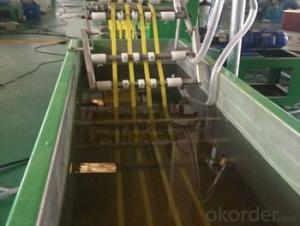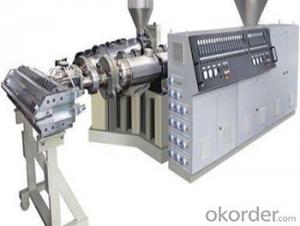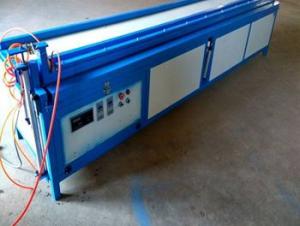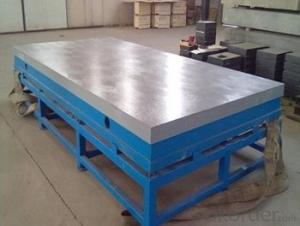FRP pultruded grating with Anti- fatigue and best quality with harmless of different styles
- Loading Port:
- Tianjin
- Payment Terms:
- TT OR LC
- Min Order Qty:
- 3 m.t.
- Supply Capability:
- 100000 m.t./month
OKorder Service Pledge
OKorder Financial Service
You Might Also Like
PRODUCT DESCRIPTION
Pultruded grating is made by a particular assembly process, which using “I” shape as its main load-bearing and special rod to go through the bearing bar. Pultruded grating include the standard grating and the custom grating, the custom grating can be designed to meet customer’s requirement or special using condition by changing the shape, size and space of the bearing bars, the surface can be covered with lozenge panel, grit panel, or added the anti-slippery sand directly.
FRP pultruded grating has the most characteristics of molded grating, but it has its distinct advantages, it has very high fiberglass content in the loading direction, so it has very high load capability, it has more superiority when used at wide span, so that the basic support will be decreased and the project cost will be reduced accordingly.
SPECIFICATION
The standard space between two crossbars is 6 inch or 12 inch.
Thickness (mm) | Bar width (mm) | Open space (mm) | Open rate (%) | Approx weight (kg/m |
25.4 | 15.2 | 22.8 | 60 | 13.2 |
25.4 | 15.2 | 15.2 | 50 | 15.9 |
25.4 | 15.2 | 10.1 | 40 | 18.5 |
25.4 | 40 | 10.8 | 21 | 14.5 |
38.1 | 15.2 | 22.8 | 60 | 15.8 |
38.1 | 15.2 | 15.2 | 50 | 19.1 |
38.1 | 15.2 | 10.1 | 40 | 22.4 |
50.8 | 25.4 | 25.4 | 50 | 16.6 |
50.8 | 25.4 | 12.7 | 33 | 21.1 |
CHOICE FOR PULTRUDED GRATING
Resin: GP resin, ISO resin, VE resin, Phenol resin
Color choice: Yellow, gray, green, custom color
Surface choice: Groove surface, grit surface, lozenge cover surface
FEATURES
a. Anti-corrosion and anti-rust
b. Light weight and high strength
c. Anti-flammable
d. Anti- fatigue
e. Safe and anti-slippery
f. Anti-ageing
g. Easy of maintenance
h. Excellent electromagnetism property
i. Good economic benefit
FIELDS SERVED
Sewage treatment,
water supply and drainage,
chemical industry,
oil industry,
power engineering,
pulp and paper.
APPLICATION
Operation terrace,
stair walkway,
ground floor,
trench cover,
sidewalk,
foot bridge.
COMPANT DESCRIPTION
CNBM,China National Building Materials Group is a state-owned enterprise in charge of administrative affairs in china building materials industry. Established in 1984, CNBM is a large group corporation of building materials with total assets of 25 billion RMB and a total staff of 30,000.CNBM now owns 200 subordinating firms of solely owned and joint-venture companies.
CNBM International Corporation is one subsidiary of CNBM, we focus on offering good-quality products,professional service and complete solution to our customers. Strong delivery capacity, advanced technology& management, strong financing capability and excellent after-sale service are our advantages in sharing international market.
FAQ
Q1.What's your sample policy?
A:We can supply the sample if we have ready parts in stock, but the customers have to pay the courier cost.
Q2.Can you produce according to the samples?
A: Yes, we can produce or modify the products according to your request.
Q3.How do you deliver the goods to my country?
A:We can provide international express, such as DHL, EMS, UPS, FedEx, etc. We select air freight and sea freight upon your requests. Quotations if without mentioning the shipping costs are shipping fee excluded.
Q4.How much does it cost to ship to my country?
A:When you goanna to place an order, please contact us, because different country has different freight.
Q5.How to get the catalogue?
A:please contact us and tell us what you are looking for.
We will try our best to meet customers' demands. Welcome you come here to visit us. We sincerely welcome partners around the world to establish business cooperation with us on the basis of mutual trust, benefit and development.
PICTURES
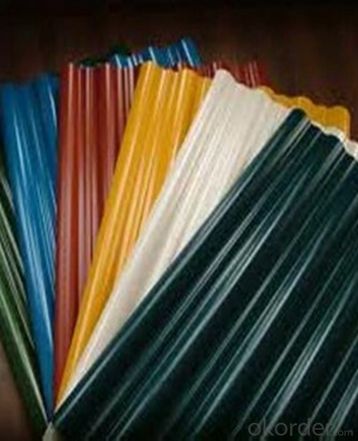
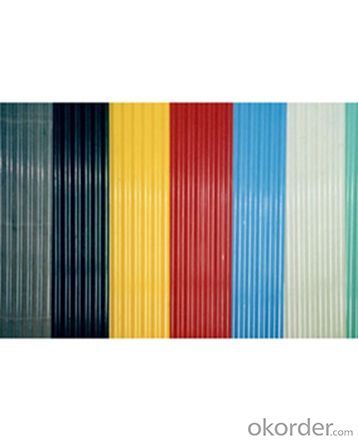
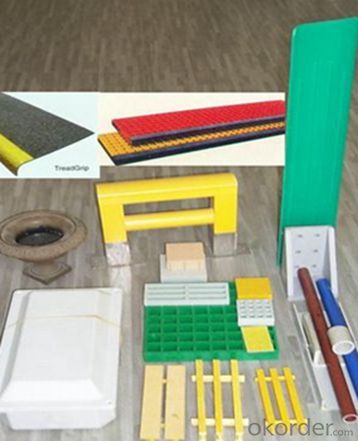
- Q:What is the maximum length of FRP pultrusion profiles that can be manufactured?
- The maximum length of FRP (Fiber Reinforced Polymer) pultrusion profiles that can be manufactured depends on various factors such as the specific manufacturing process, equipment capacity, and transportation limitations. In general, FRP pultrusion profiles can be manufactured in lengths ranging from a few feet to several hundred feet. However, there are certain practical limitations that need to be considered. Firstly, the length of the pultrusion profiles is often limited by the size and capacity of the pultrusion equipment used in the manufacturing process. Different pultrusion machines have varying capabilities, and their length capacities can range from a few feet to over 100 feet. Manufacturers must consider the available equipment and its limitations when determining the maximum length of the profiles they can produce. Additionally, transportation and logistical constraints may also impact the maximum length of FRP pultrusion profiles. Longer profiles can be more challenging to transport due to restrictions on road transport, shipping containers, or handling capabilities. These limitations may vary depending on the region, infrastructure, and transportation methods available. It is important to note that longer profiles may also face challenges in terms of quality control and dimensional stability during manufacturing. As the length increases, it becomes more difficult to maintain consistent mechanical properties and control the curing process effectively. Therefore, while there is no fixed maximum length for FRP pultrusion profiles, it is crucial for manufacturers to consider the technical capabilities of their equipment, transportation logistics, and quality control factors when determining the practical limit for the length of their products.
- Q:Are FRP pultrusion profiles impact resistant?
- Yes, FRP (Fiber Reinforced Polymer) pultrusion profiles are known for their high impact resistance. The combination of strong reinforcing fibers and a polymer matrix makes them highly durable and able to withstand significant impact forces without breaking or deforming.
- Q:Can FRP pultrusion profiles be used in the construction of shipping containers?
- Indeed, the utilization of FRP pultrusion profiles in the construction of shipping containers is possible. These profiles offer numerous advantages that render them suitable for this purpose. To begin with, FRP pultrusion profiles possess exceptional strength and durability. They exhibit a high strength-to-weight ratio, enabling the creation of lightweight shipping containers capable of withstanding heavy loads and harsh environmental conditions. This characteristic proves particularly advantageous in the shipping industry, where containers endure rough handling and extreme weather while in transit. Furthermore, FRP pultrusion profiles display resistance to corrosion, a significant concern in the shipping industry due to exposure to saltwater and other corrosive substances. Unlike traditional materials like steel, FRP does not rust or corrode, thereby ensuring a longer lifespan for the shipping containers. Moreover, FRP pultrusion profiles exhibit excellent thermal insulation properties. This characteristic facilitates the maintenance of a consistent temperature within the shipping containers, which is crucial for transporting temperature-sensitive goods such as food, pharmaceuticals, and chemicals. Additionally, FRP pultrusion profiles can be easily customized and fabricated into various shapes and sizes, allowing for design flexibility in the construction of shipping containers. They can be molded to specific dimensions and incorporate features such as reinforcements, fastening points, and integrated insulation. Notably, FRP pultrusion profiles are also non-conductive and possess low thermal conductivity. These attributes make them an ideal choice for shipping containers that transport sensitive electronic equipment or hazardous materials, as they reduce the risk of electrical and thermal accidents. In conclusion, FRP pultrusion profiles can indeed be employed in the construction of shipping containers. Their strength, durability, corrosion resistance, thermal insulation properties, design flexibility, and non-conductive nature make them a reliable and practical choice for this application.
- Q:Are FRP pultrusion profiles resistant to hydrochloric acid?
- FRP pultrusion profiles exhibit a general resistance to hydrochloric acid. The corrosion resistance of FRP materials varies based on the specific resin and fiber used during manufacturing. Nevertheless, most FRP pultrusion profiles are designed to endure exposure to a wide array of chemicals, including hydrochloric acid. The corrosion resistance of FRP is attributed to the chemical inertness of the resin matrix, typically composed of polyester, vinyl ester, or epoxy. These resins form a protective barrier against chemical attack, allowing FRP profiles to maintain their structural integrity even in harsh surroundings. However, the level of resistance may fluctuate depending on the concentration and temperature of the hydrochloric acid. In instances of high concentration or elevated temperatures, the resistance may diminish. It is always recommended to refer to the manufacturer's specifications or seek expert advice to ensure the suitability of FRP pultrusion profiles for specific acid concentrations and temperature ranges. In conclusion, FRP pultrusion profiles are renowned for their exceptional chemical resistance and are frequently selected for applications involving exposure to acids or corrosive environments.
- Q:Can FRP pultrusion profiles be used in the construction of railway sleepers?
- Yes, FRP (Fiber Reinforced Polymer) pultrusion profiles can be used in the construction of railway sleepers. FRP pultrusion profiles offer several advantages that make them suitable for this application. Firstly, FRP pultrusion profiles are lightweight yet strong, making them ideal for railway sleepers. They have high strength-to-weight ratios and can withstand heavy loads, making them a reliable choice for supporting the weight of trains. Additionally, the lightweight nature of FRP profiles makes them easier to transport and install, reducing construction time and costs. Secondly, FRP pultrusion profiles are highly resistant to corrosion, which is a crucial factor for railway sleepers. Traditional materials such as wood or steel are susceptible to corrosion when exposed to moisture and chemicals. FRP profiles, on the other hand, are non-corrosive and do not require regular maintenance or replacement due to rust or decay. Furthermore, FRP pultrusion profiles offer excellent durability and longevity. They are resistant to UV radiation, extreme temperatures, and chemicals, ensuring a longer lifespan compared to traditional materials. This reduces the need for frequent replacements, resulting in lower maintenance and lifecycle costs. Moreover, FRP pultrusion profiles can be customized to meet specific design requirements. They can be manufactured in various shapes and sizes to fit different railway sleeper designs, offering flexibility in construction. Additionally, they can be made in different colors, allowing for aesthetic customization. Lastly, FRP pultrusion profiles offer excellent electrical insulation properties. This is crucial for railway sleepers, as they need to provide insulation between the train tracks and the ground to prevent electrical interference and ensure safe operation. In conclusion, FRP pultrusion profiles are a suitable choice for the construction of railway sleepers due to their lightweight, high strength, corrosion resistance, durability, customization options, and electrical insulation properties.
- Q:Can FRP pultrusion profiles be used in the construction of modular buildings?
- Modular buildings can utilize FRP (Fiber Reinforced Polymer) pultrusion profiles. These profiles possess various advantages that render them suitable for modular construction. To begin with, FRP pultrusion profiles are not only lightweight, but also highly durable and strong. This makes them perfect for modular buildings, where reducing weight is crucial for transportation and assembly. In fact, the strength-to-weight ratio of FRP pultrusion profiles often surpasses that of traditional construction materials like steel or concrete. Furthermore, these profiles are resistant to corrosion, chemicals, and weathering. This becomes particularly significant for modular buildings, as they may face different environmental conditions during transportation and on-site assembly. The corrosion resistance also guarantees the longevity and durability of the modular building. Moreover, FRP pultrusion profiles can be designed to possess excellent thermal insulation properties. This proves advantageous for modular buildings that prioritize energy efficiency, as it helps minimize heating and cooling costs. Additionally, these profiles are easily shaped and customized to meet the specific requirements of the modular building design. This versatility allows for the creation of intricate and complex structural components, thereby facilitating the modular construction process. Furthermore, FRP pultrusion profiles are non-conductive, which enhances safety in modular buildings. Their inability to conduct electricity makes them appropriate for applications necessitating electrical insulation. In conclusion, FRP pultrusion profiles offer a viable choice for constructing modular buildings due to their lightweight, durability, corrosion resistance, thermal insulation properties, versatility, and non-conductive nature. These attributes make FRP pultrusion profiles a reliable and efficient solution for modular construction projects.
- Q:Are FRP pultrusion profiles resistant to electrical arcing?
- FRP pultrusion profiles are generally resistant to electrical arcing. This is because they are made from non-conductive materials like fiberglass reinforced plastic. These profiles do not conduct electricity, which makes them ideal for applications where electrical arcing or conductivity is a concern. However, it is important to note that the specific resistance to electrical arcing may vary depending on the specific composition and design of the FRP pultrusion profiles. It is recommended to consult with the manufacturer or supplier of the profiles to ensure they meet the required electrical resistance standards for a particular application.
- Q:How do FRP pultrusion profiles compare to traditional building materials?
- The use of FRP (Fiber Reinforced Polymer) pultrusion profiles provides several benefits compared to traditional building materials. To begin with, FRP profiles are incredibly lightweight yet remarkably durable, making them highly suitable for industries like aerospace and automotive, where weight reduction is crucial. In contrast, materials like steel or wood are much heavier and may require additional support or reinforcement. Another notable advantage of FRP pultrusion profiles is their exceptional strength-to-weight ratio. They possess high tensile and flexural strength, surpassing that of many traditional materials. This strength allows FRP profiles to offer excellent structural support while minimizing the overall weight of the structure. Furthermore, FRP pultrusion profiles are resistant to corrosion, making them well-suited for environments prone to moisture, chemicals, or extreme temperatures. Unlike steel or wood, FRP does not rust or rot, thereby requiring minimal maintenance and extending the lifespan of the structure. In terms of design flexibility, FRP profiles provide a wide range of shapes and sizes, enabling architects and engineers to create intricate and complex structures. Traditional materials often have limitations in terms of design possibilities and may require additional fabrication steps to achieve the desired shape. Additionally, FRP pultrusion profiles have the advantage of being electrically non-conductive, making them an ideal choice for applications where electrical insulation is necessary. Unlike metals, FRP does not conduct electricity, reducing the risk of electrical accidents. Lastly, FRP profiles are environmentally friendly as they can be made from recycled materials and are fully recyclable themselves. In contrast, traditional materials like steel or concrete require significant energy consumption and contribute to carbon emissions during their production. Overall, FRP pultrusion profiles offer numerous advantages compared to traditional building materials, including lightweight, high strength, corrosion resistance, design flexibility, electrical insulation, and environmental sustainability. These benefits make FRP profiles an attractive choice for various industries and applications.
- Q:Can FRP pultrusion profiles be used in the construction of chemical processing equipment?
- Yes, FRP (Fiber Reinforced Plastic) pultrusion profiles can be used in the construction of chemical processing equipment. FRP offers excellent resistance to corrosion, chemicals, and high temperatures, making it a suitable material for such applications. The pultrusion process ensures that the profiles are strong, durable, and have consistent properties, making them reliable for use in chemical processing equipment where resistance to corrosive substances is crucial.
- Q:Can FRP pultrusion profiles be used in the automotive manufacturing industry?
- Yes, FRP (Fiber Reinforced Polymer) pultrusion profiles can be used in the automotive manufacturing industry. FRP pultrusion profiles offer several advantages that make them suitable for automotive applications. Firstly, FRP profiles are lightweight, which helps in reducing the overall weight of the vehicle. This is crucial for improving fuel efficiency and reducing emissions. The lighter weight of FRP profiles also allows for better handling and improved performance. Secondly, FRP profiles possess excellent mechanical properties such as high strength and stiffness. This makes them suitable for use in structural components of vehicles, such as chassis, body panels, and frames. FRP profiles can withstand heavy loads and offer good impact resistance, ensuring the safety of the vehicle and its occupants. Additionally, FRP profiles exhibit excellent corrosion resistance, which is particularly beneficial for automotive applications. Unlike traditional materials like steel, FRP profiles are not susceptible to rust or corrosion, making them ideal for use in various automotive environments, including exposure to moisture, chemicals, and salt. Furthermore, FRP pultrusion profiles can be tailored to meet specific design requirements, allowing for flexibility in manufacturing. They can be produced in various shapes and sizes, offering versatility in designing complex components. This flexibility in design also allows for customization and optimization of vehicle performance. Lastly, FRP profiles offer good thermal and electrical insulation properties. This makes them suitable for applications where electrical conductivity needs to be minimized or thermal insulation is required. Overall, the lightweight, high strength, corrosion resistance, design flexibility, and insulation properties of FRP pultrusion profiles make them well-suited for use in the automotive manufacturing industry. They can contribute to the development of more efficient, safe, and durable vehicles.
1. Manufacturer Overview |
|
|---|---|
| Location | |
| Year Established | |
| Annual Output Value | |
| Main Markets | |
| Company Certifications | |
2. Manufacturer Certificates |
|
|---|---|
| a) Certification Name | |
| Range | |
| Reference | |
| Validity Period | |
3. Manufacturer Capability |
|
|---|---|
| a)Trade Capacity | |
| Nearest Port | |
| Export Percentage | |
| No.of Employees in Trade Department | |
| Language Spoken: | |
| b)Factory Information | |
| Factory Size: | |
| No. of Production Lines | |
| Contract Manufacturing | |
| Product Price Range | |
Send your message to us
FRP pultruded grating with Anti- fatigue and best quality with harmless of different styles
- Loading Port:
- Tianjin
- Payment Terms:
- TT OR LC
- Min Order Qty:
- 3 m.t.
- Supply Capability:
- 100000 m.t./month
OKorder Service Pledge
OKorder Financial Service
Similar products
New products
Hot products
Related keywords
